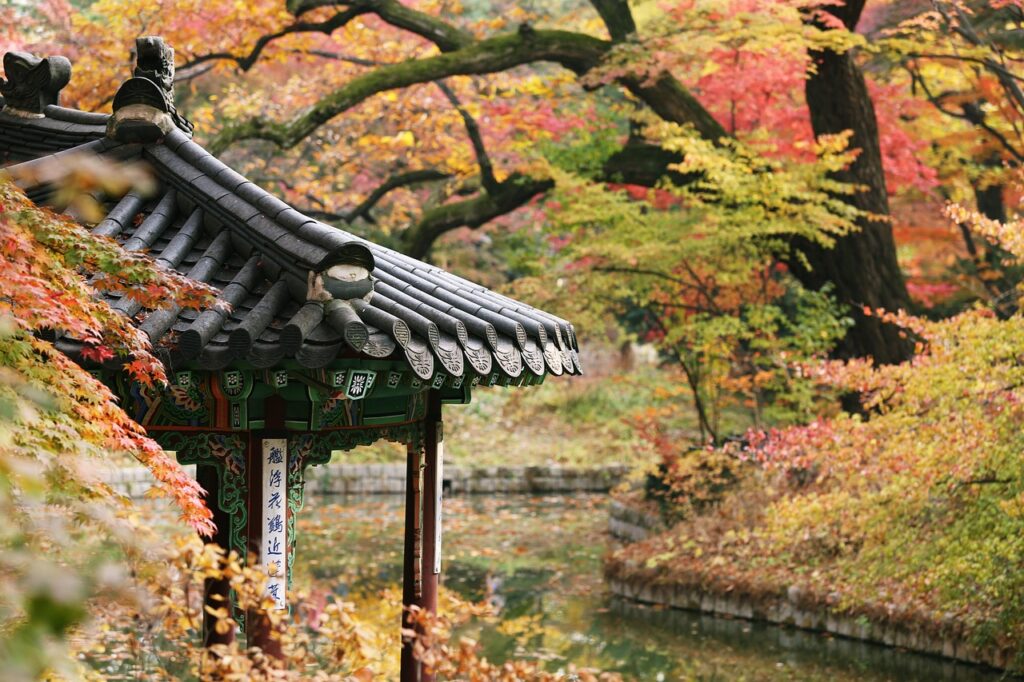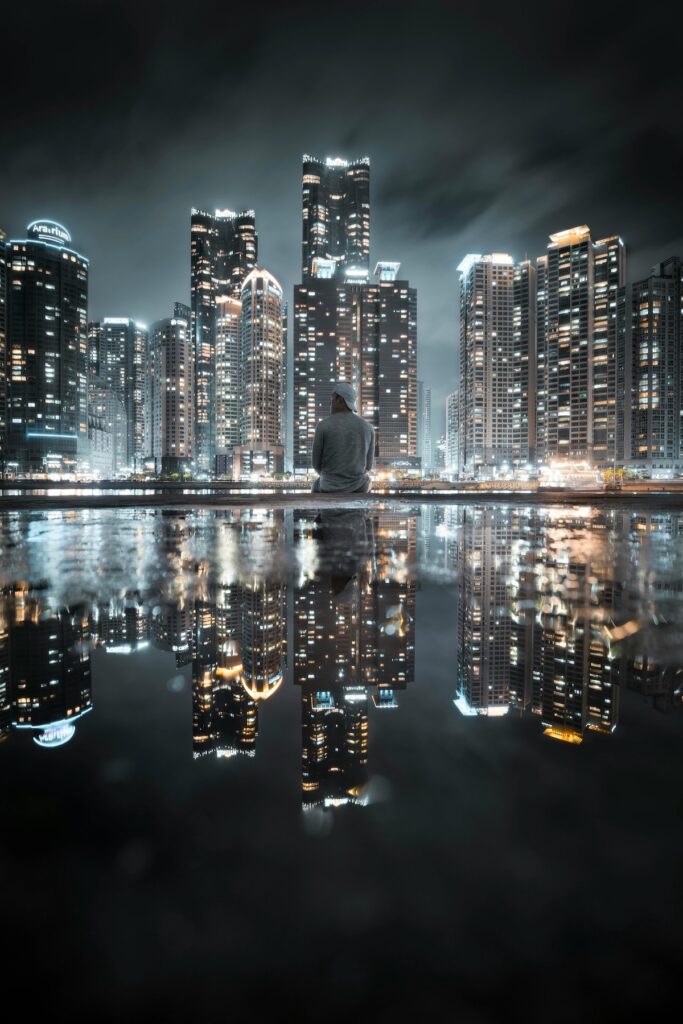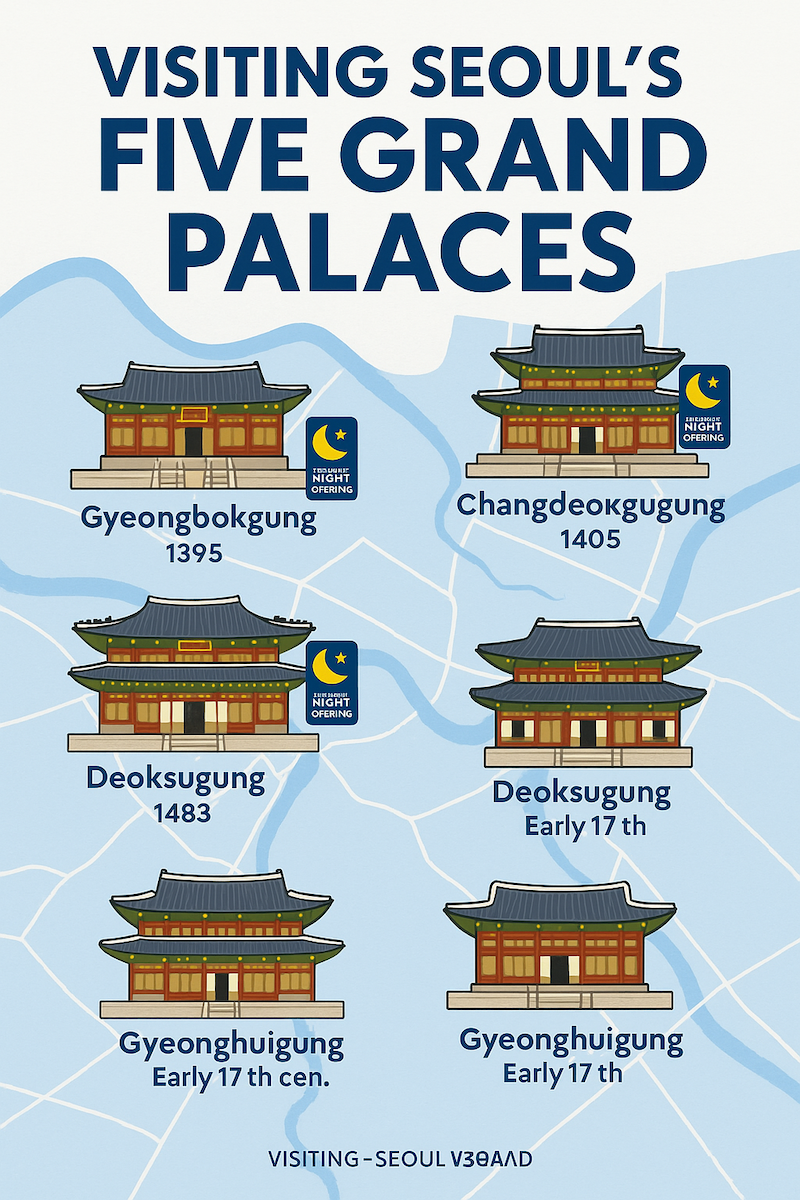🍁 Introduction: When Korea Turns Red, Gold, and Beautiful
There is something magical about autumn in Korea. The heat of summer fades away, the sky clears into a deep blue, and the entire country begins to glow in shades of red, orange, and yellow. For many travelers, this is the best season to visit Korea — not just for the cooler weather, but for the breathtaking beauty of its fall foliage, known locally as danpung (단풍).
Every year, starting from late September and lasting until mid-November, Korean mountains, parks, and even city streets transform into vivid landscapes that attract photographers, hikers, and couples on romantic trips. Whether you’re walking along a quiet temple path or standing at the peak of Seoraksan Mountain, the sight of autumn leaves dancing in the wind feels like stepping into a watercolor painting.
In this guide, you’ll discover the best places to see fall foliage in Korea, when to visit, how to plan your route, and what makes this season so culturally meaningful.
🗓️ When Does Autumn Start in Korea?
Autumn in Korea usually begins in late September and continues until early November.
The timing of the peak foliage varies depending on the region:
| Region | First Color Change | Peak Season | Famous Spots |
|---|---|---|---|
| Northern (Seoraksan, Odaesan) | Late September | Mid-October | Seoraksan National Park |
| Central (Seoul, Nami Island) | Early October | Late October | Seoul Forest, Nami Island |
| Southern (Gyeongju, Busan) | Mid-October | Early November | Bulguksa Temple, Geumjeongsan |
| Jeju Island | Late October | Mid-November | Hallasan Mountain |
🍂 Tip: Plan your visit during the “peak + one week before” window. The first signs of yellow gingko leaves and red maple trees appear about 7–10 days before the official peak.
🌆 1. Seoul — Where City Meets Autumn
Even in the heart of the capital, autumn is everywhere. Seoul’s parks, palaces, and river paths become a living gallery of color.
🌳 Gyeongbokgung Palace (경복궁)
Few experiences match the beauty of watching autumn leaves fall around royal palace walls.
The blend of red maple trees against blue-tiled rooftops creates one of the most photographed scenes in Seoul.
- Best time: Late October
- Nearby attractions: Bukchon Hanok Village, Samcheong-dong cafés
- How to go: Gyeongbokgung Station (Line 3, Exit 5)
🌿 Seoul Forest (서울숲)
Often compared to Central Park, this is a peaceful retreat inside the city.
You’ll find gingko-lined walkways, deer enclosures, and plenty of quiet corners for photography.
- Best time: Mid to late October
- Tip: Arrive early in the morning — sunlight through golden trees is unforgettable.
🏞️ Namsan Seoul Tower
For a panoramic view of the city’s autumn colors, take the Namsan cable car.
The trail to the tower is surrounded by maple trees that create a red tunnel in October.

🏞️ 2. Nami Island — Korea’s Most Iconic Autumn Destination
If there’s one place that defines “autumn in Korea,” it’s Nami Island (남이섬).
Located just 1.5 hours from Seoul, this half-moon-shaped island is famous for its tree-lined paths, romantic atmosphere, and Korean drama filming locations (Winter Sonata was filmed here).
Visitors from all over Asia — Japan, Singapore, Malaysia, and beyond — come to see the yellow ginkgo trees and red maple avenues.
- Best time: Mid to late October
- How to go: ITX train from Yongsan → Gapyeong Station → Ferry to Nami Island
- Admission: Around 16,000 KRW including ferry ticket
💬 “It felt like walking inside a Korean drama,” says Jennifer, a traveler from the Philippines.
⛰️ 3. Seoraksan National Park — The King of Korean Autumn
When Koreans talk about fall foliage, one name always comes up: Seoraksan (설악산).
Located in Sokcho, this national park offers a spectacular mix of rugged cliffs, waterfalls, and red maple forests.
- Peak season: Mid-October
- How to go: Express bus from Seoul (Dong Seoul Terminal → Sokcho, 2.5 hrs)
- Entrance fee: Around 4,000 KRW
For hikers, the most popular routes are:
- Biryong Falls Trail (비룡폭포 코스) — 1.5 hrs round trip
- Gwongeumseong Fortress Cable Car — offers a breathtaking aerial view of the entire valley.
🧡 Seoraksan’s autumn is not just scenery — it’s an experience.
You’ll see families picnicking, monks meditating, and foreign travelers climbing the same trails in quiet awe.
🏯 4. Gyeongju — Autumn Among Ancient Temples
Gyeongju (경주), often called “the museum without walls,” becomes even more poetic in autumn.
The golden hues of ginkgo trees line ancient temples, and the contrast between red maple leaves and stone pagodas is mesmerizing.
Top spots:
- Bulguksa Temple (불국사): UNESCO World Heritage site surrounded by maple forests.
- Anapji Pond (동궁과 월지): Reflections of autumn colors on still water at sunset.
🌅 “I sat near Anapji Pond for an hour just watching leaves fall — it felt timeless.”
🌋 5. Jeju Island — Autumn Beyond the Mainland
Autumn in Jeju (제주) offers a softer, more coastal version of Korea’s fall.
Instead of mountains, you’ll find open fields of silver grass (eulalia), orange tangerine farms, and distant volcanic peaks covered in amber tones.
Where to go:
- Hallasan Mountain (한라산): Korea’s highest peak, with panoramic views of Jeju’s colorful forests.
- Sangumburi Crater (산굼부리): Famous for silver grass fields waving in the wind.
- Camellia Hill: Starts blooming as autumn ends — a perfect blend of seasons.
🚗 6. Fall Road Trips — Drive Through Color
Some of the best autumn memories come from the road.
Renting a car allows you to explore hidden valleys and local villages where buses rarely stop.
Top scenic routes:
- Yangpyeong → Gapyeong → Chuncheon: Lakeside views + mountain colors
- Jecheon → Danyang: Riverside cliffs, famous for cinematic drives
- Seoraksan → Odaesan → Pyeongchang: Endless golden forests along the east
🎶 Pro tip: Play soft Korean jazz or lo-fi tunes as you drive — it adds a cinematic touch to your trip.
🕯️ 7. Korean Culture and Autumn Traditions
Autumn is not just about scenery — it’s also the season of reflection, gratitude, and togetherness.
Many temples hold meditation programs, tea ceremonies, or temple stays for foreigners during this season.
In Korean culture, fall symbolizes maturity and calm.
You’ll notice seasonal foods like roasted chestnuts, sweet potatoes, and jeon (Korean pancakes) sold by street vendors near parks.
🫖 Tip: Try “omija tea” (five-flavor berry tea) — a traditional autumn drink known for its bright red color and refreshing taste.
📷 8. Photography & Travel Tips for the Perfect Autumn Trip
- Best Time for Photos: Early morning (7–9 AM) or golden hour (4–6 PM).
- Avoid Crowds: Visit weekdays or early mornings.
- Weather: Average 10–20°C, bring a jacket.
- Camera Tip: Use polarizing filters to enhance leaf colors and reduce glare.
💬 9. Voices from Travelers
“I didn’t know Korea could be this beautiful outside Seoul.” — Andrea, Italy
“Every park looked like a movie set. I’ll come again next fall.” — Michael, Singapore
“It was my first time seeing red leaves — I cried a little.” — Yuki, Japan
🌅 Conclusion: Autumn in Korea Is a Feeling
Korea’s autumn is more than a season — it’s a moment of stillness, beauty, and gratitude.
You can stand under a tree in Nami Island, walk through a temple in Gyeongju, or hike up Seoraksan — and everywhere, the message is the same: slow down, breathe, and look around.
For travelers, autumn in Korea is not just something to see — it’s something to feel.

